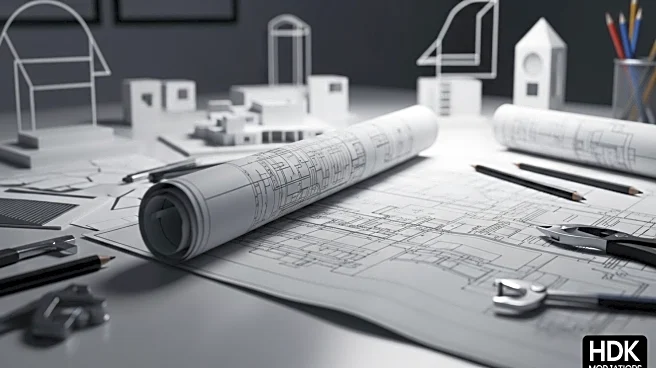What's Happening?
The construction industry is experiencing a decline in backlog, particularly affecting smaller firms with annual revenues under $30 million. According to a survey by the Associated Builders and Contractors, the backlog fell to 8.5 months in August, down from 8.8 months in July. This decline is attributed to ongoing challenges such as rising material costs, policy uncertainty, and labor shortages. While larger firms with revenues over $100 million have managed to maintain longer backlogs, smaller firms are struggling. Infrastructure-related projects have seen an increase in backlog, but commercial and institutional projects have lost nearly a month's worth of work. Tariffs and funding issues continue to cause project delays and cancellations, impacting contractor confidence.
Why It's Important?
The decline in backlog for small construction firms highlights the economic pressures facing the industry, particularly in the nonresidential sector. Rising material costs and labor shortages are significant challenges that could lead to further project delays and cancellations. This situation could impact the broader economy, as construction is a key driver of economic growth and employment. Smaller firms may face financial strain, potentially leading to business closures or consolidations. The disparity between small and large firms could widen, affecting competition and innovation in the industry. Policymakers and industry leaders may need to address these challenges to support the construction sector's recovery and growth.
What's Next?
The construction industry may see continued challenges in the coming months, with smaller firms likely to face ongoing difficulties. The impact of tariffs and funding issues may persist, potentially leading to more project delays and cancellations. Industry stakeholders may need to explore strategies to mitigate these challenges, such as advocating for policy changes or seeking alternative funding sources. The focus on infrastructure projects could provide some relief, but the commercial and institutional sectors may remain weak. Monitoring economic indicators and industry trends will be crucial for anticipating future developments and opportunities.










